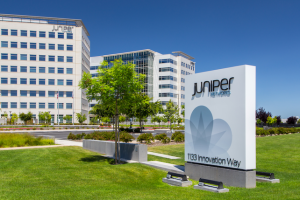Many thanks to Rasmus Holst, CRO at Wire for joining Safety Detectives and giving us the opportunity to learn more about the company, cybersecurity trends, and how these have been impacted by Covid-19
What does Wire do?
Wire is the most secure enterprise collaboration platform, which uses end-to-end encryption to ensure that all video calls, audio calls, messages, and files are sent and shared at the highest levels of security. Today Wire’s platform is used by over 1,800 enterprise customers, including five of the G7 governments.

What is your mission statement?
Our mission has always been to create the most secure communications and collaboration platform. We’ve focused on building an infrastructure that enterprises and governments can rely upon for all communications across teams, clients, and partners. Particularly with remote and hybrid working models emerging as the norm against the backdrop of fast-growing cyber threats, Wire provides levels of data protection and privacy protocols that are both incredibly robust and suitable for organizations that truly value privacy.
What makes Wire stand out from its competitors?
Since its inception, Wire’s core differentiator has been its end-to-end encryption (E2EE) approach. Wire was founded upon three key pillars to drive enterprise communication and collaboration forward: security, privacy, and user experience.
In today’s hybrid/remote work environment, these pillars have held steady, and highlighted how Wire has anticipated the security architecture needs of the present and the future. Many organizations are now realizing the importance of E2EE and “zero trust”-based applications to address the significant productivity, security, privacy, and regulation challenges all at once, and are adopting Wire to help manage these issues.
What is the biggest cybersecurity problem that we are currently facing?
Cyberattacks – and in particular, ransomware – has quickly become one of the greatest cybersecurity threats to rupture enterprises and governments, at scale. In the past year alone, ransomware attacks have continued to climb in number and severity, with global ransomware recovery costs doubling from an average of $761,106 in 2020 to $1.85 million in 2021.
This year’s slew of attacks, including the Colonial Pipeline and Kasaya, demonstrate the fundamental need for a new security infrastructure based on zero trust, data sovereignty, and federation. To achieve this, nation states need to take proactive measures – in close collaboration with the private sector and leading tech vendors – to best mitigate and future proof against the privacy and security challenges that will occur now and in the next few years.
What impact has Covid-19 had on cybersecurity trends? How has Wire evolved to keep up with this?
The number of cybersecurity threats rose to new heights at the onset of the COVID-19 pandemic. During the first four months of the pandemic alone, it was reported that cyberattacks spiked by an estimated 400%. In many ways, the pandemic has simply acted as a catalyst for many pre-existing factors and illuminated the security vulnerabilities that exist within an
organization. As businesses were thrown into the sudden shift to remote work, organizations scrambled to refine their cybersecurity approaches, leaving a prime opening for cybercriminals.
At Wire, the continuous spate of cyberattacks has validated our security-by-design approach, and we continue to work closely with our partners and customers to ensure that they have the security architecture in place to address these challenges.
Is there anything else that you would like to tell us about Wire?
Wire continues to grow at an exponential rate – in April we announced our Series B funding, where we also mentioned our 3x annual revenue growth, driven by significant customer wins across sectors including energy, financial services, government, and other industries.
Against the backdrop of constant cybersecurity threats, geopolitical tensions, and concerns around privacy regulation, Wire has a steadfast commitment to staying ahead of the curve by providing organizations with the most secure collaboration platform that the industry has to offer.
Source of Article





